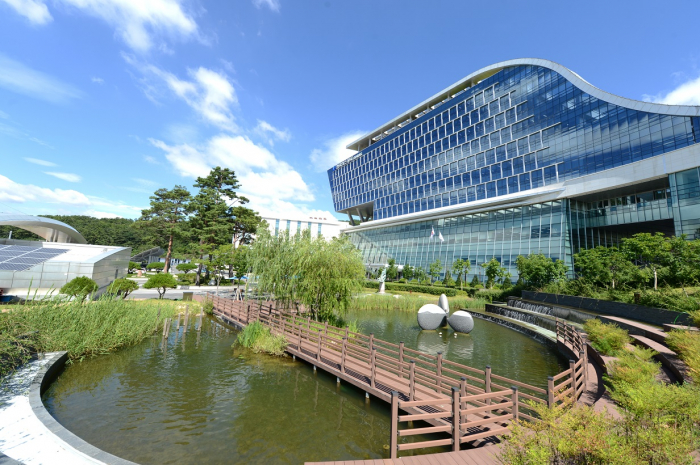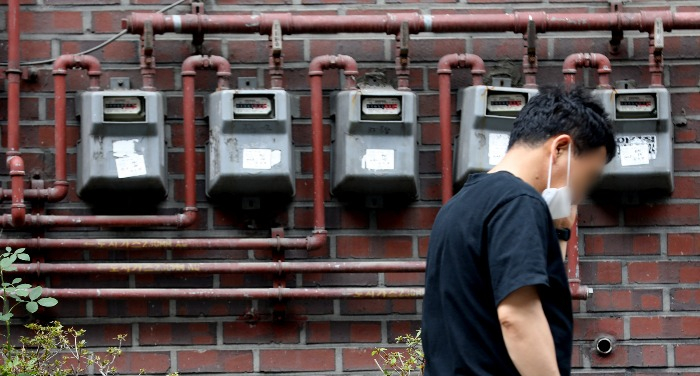Energy
KOGAS to cut exposure to Indonesia LNG project in 2027
The LNG importer failed to cut the mid-term contract price with the Indonesian plant in which it holds a minority stake
By Aug 07, 2022 (Gmt+09:00)
4
Min read
Most Read
LG Chem to sell water filter business to Glenwood PE for $692 million


KT&G eyes overseas M&A after rejecting activist fund's offer


Kyobo Life poised to buy Japan’s SBI Group-owned savings bank


StockX in merger talks with Naver’s online reseller Kream


Meritz backs half of ex-manager’s $210 mn hedge fund



The state-run Korea Gas Corp. (KOGAS) has decided to reduce its exposure to a $2.8 billion joint liquefied natural gas (LNG) project in Indonesia in 2027, when its long-term procurement contract expires with the LNG plant, Donggi-Senoro LNG (DSLNG).
The decision, announced at its June shareholder meeting, came after it failed to slash the mid-term supply price with LSLNG, even though its Japanese partner Mitsubishi Corp. cut the contract price through renegotiations in 2018.
KOGAS did not specify from which business of the project it plans to withdraw. DSLNG operates an LNG liquefaction facility and an export terminal in central Sulawesi.
The Korean LNG importer had participated as a minority shareholder in the Indonesian project led by the Japanese trading firm, along with Indonesia’s state-run energy company Pertaminal. It has a 9.8% stake in DSLNG.
KOGAS entered price renegotiations with DSLNG, but failed to slash the mid-term contract price. Prior to that, Japan cut its import price from the Indonesian plant to around $14 per MMBtu in 2018. MMBtu is a standard unit of measurement for natural gas.
The failure in the price renegotiations means KOGAS will likely continue to pay an additional 62.4 billion won ($50 million) per year, compared to the price to be paid by Mitsubishi to import LNG from DSLNG through 2027.
Over the past five years, KOGAS was found to have paid 310 billion won ($240 million) more in total than Mitsubishi to procure LNG from DSLNG, according to sources with knowledge of the matter.
KOGAS then sought to settle the price dispute through the Singapore International Commercial Court, but failed to resolve the dispute.
Finally, KOGAS brought the case to the International Court of Arbitration to no avail.
IMPORT VOLUME
KOGAS imports about 700,000 tons, or one-third of the 2 million tons produced from DSLNG, one of Indonesia’s LNG plants in Indonesia.
The DSLNG project is the only one in which KOGAS is involved from gas liquefaction to distribution. It was aimed at securing a steady volume of LNG, in addition to dividend income.
In that regard, its exposure reduction to the Indonesia project would cut both dividend income and LNG supply volume.
Between 2018 and 2021, KOGAS received a total of 73 billion won in dividends from the Indonesia plant.
“KOGAS continued to take false steps in relation to the Senoro project, paying additional costs following the failed price renegotiation, legal costs for arbitration efforts over price and opportunity costs from cutting exposure to project,” a KOGAS official said.
"KOGAS needs to improve its procurement competitiveness.”

Since Chae Hee-bong took over as KOGAS' chief executive in 2019, its gas supply experts have been scattered to municipal governments in a reshuffling of senior managers.
The move also comes as Korean utilities are under fire for their loss-making overseas projects.
The additional LNG costs KOGAS will pay to DSLNG will likely be passed on to households. Adding to the pressure, the average LNG price has soared 25 times over the past two years, signaling a global energy crisis since Russia's invasion of Ukraine early this year.
This year, KOGAS bumped up retail LNG prices both in May and July, to be followed by more hikes later this year.
DWINDLING STOCKPILES
Amid a global LNG shortage, KOGAS’ LNG stockpiles have dwindled to the level of meeting the estimated demand for fewer than 10 days in winter.
In the first half of this year, South Korea imported 2.3 million tons of LNG, a study by The Korea Economic Daily shows. The figure is the lowest level in five years and a 16% decrease on-year.
The South Korean gas supplier needs to increase its procurement by 9.57 million tons more than its earlier expectations to prevent a supply shortage in the coming winter.
Otherwise, it will run out of stock for about one and a half months this winter, based on the country’s LNG consumption in December 2021 and January 2022.
Coupled with the growing demand caused by the unusually hot summer and cold winter, LNG suppliers are grappling with supply shortages after Russia cut natural gas supplies to Europe in retaliation for economic sanctions imposed by the US and Europe since it invaded Ukraine.
Deepening the LNG shortage, Freeport LNG, one of the largest US operators of LNG export terminals, decided to shut down its plant by the end of this year following a fire in its LNG liquefication delivery system.
Write to Zi-Hoon Lee at lizi@hankyung.com
Yeonhee Kim edited this article.
More to Read
-

-

-
 EnergyKOGAS attempts to expand LNG bunkering as global demand grows
EnergyKOGAS attempts to expand LNG bunkering as global demand growsJul 26, 2021 (Gmt+09:00)
1 Min read
Comment 0
LOG IN


